So no there was no more entries, and the final results are thus as referred in post# 927.
Adler17 came out on top as a most convincing winner, but the three other contestants did also very well. Kudos to all of you, thanks for participating and also thanks to everybody else who gave positive feedback!

So finally, the answers. I apologize, but due to time pressure this summary is not so extensive as I hope. However any questions and comments are most welcome.
1.What event is depicted here? Bonus: Who made this painting?
The surrender of Breda
In 1624,during the Dutch liberation war Breda was beleaguered by a Spanish army under command of the famous Italian general marquis Ambrogio Spinola
The siege lasted eleven months until the defenders finally had to concede due to lack of supplies.
The importance of the capture of this stronghold can be reflected in the fact that the event was painted by none less than
Diego Velasquez.
2.What was the lobotomobile?
The psychosurgical method commonly known as lobotomy, was popularized in USA by Walter Freeman, who also invented the "icepick lobotomy" procedure, which literally used an icepick and rubber mallet instead of the standard surgical leucotome. The method consisted in hammering the icepick into the skull just above the tear duct and wiggle it around. Between 1936 through the 1950s, Freedman advocated lobotomies throughout the United States, travelling around in his own personal van, which he called his
"lobotomobile", demonstrating the procedure in many medical centres. It is claimed that he even performed a few lobotomies in hotel rooms.
3. Who wrote this:
We are not free unless the men who frame and execute the laws represent the interests of the lives of the people and no other interest. The ballot does not make a free man out of a wage slave. there has never existed a truly free and democratic nation in the world. From time immemorial men have followed with blind loyalty the strong men who had the power of money and of armies. Even while battlefields were piled high with their own dead they have tilled the lands of the rulers and have been robbed of the fruits of their labor. They have built palaces and pyramids, temples and cathedrals that held no real shrine of liberty.
As civilization has grown more complex the workers have become more and more enslaved, until today they are little more than parts of the machines they operate. Daily they face the dangers of railroad, bridge, skyscraper, frieght train, stokehold, stockyard, lumber raft and min. Panting and training at the docks, on the railroads and underground and on the seas, they move the traffic and pass from land to land the precious commodities that make it possible for us to live. And what is their reward? A scanty wage, often poverty, rents, taxes, tributes and war indemnities.
Helen Keller (1880 - 1968)
It may not be so well known, but Helen Keller was a radical socialist for most of her life. She joined the Socialist party of Massachusetts in 1909. After the Russian Revolution, she sang the praises of the new communist nation: "In the East a new star is risen! With pain and anguish the old order has given birth to the new, and behold in the East a man-child is born! Onward, comrades, all together! Onward to the campfires of Russia! Onward to the coming dawn!" Gradually she moved to the left of the Socialist party and became a Wobbly, a member of the Industrial Workers of the World (IWW) the syndicalist union persecuted by Woodrow Wilson.
Her conversion from a social radical to a full-fledged socialist made her one of the most notorious women in the world, her critics would even not refrain from using her handicap against her.
Among her achievements for the radical cause was helping found the American Civil Liberties Union to fight for the free speech of others. She also sent $100 to the NAACP with a letter of support that appeared in its magazine The Crisis, supported Eugene V. Debs in each of his campaigns for the presidency and wrote numerous essays on the women's movement, on politics, on economics. A selection of her writings can be found here:
www.marxists.org/reference/archive/keller-helen/index.htm. along with portions of her FBI-file.
4.The following Latin words is different types of what occupation in ancient Rome: meretrix, proseda, scortum,diobolares?
Interestingly enough, this ws something everybody knew...
It is a few of the numerous terms the ancient Romans had for
prostitutes.
A meretrix is thus described by Nomus Marcellus:
"This is the difference between a meretrix (harlot) and a prostibula (common strumpet): a meretrix is of a more honorable station and calling; for meretrices are so named a merendo (from earning wages) because they plied their calling only by night; prostibulu because they stand before the stabulum (stall) for gain both by day and night."
A proseda is one who sits in front of her cell or stall. She who later became the Empress Theodora is claimed to have belonged to this class.
A scortum is synonymous with a strumpet.
And finally, a doris is a harlot of great beauty wearing no clothing.
5.What was the treaty of Quillin?
In 1641, the sensational happened that Spanish colonisators for the first time treated an Indian nation as an equal partner and granted it right to its own territory. The nation in question was the
mapuche (araucanos in Spanish), located in today's Chile, which had successfully resisted colonization, even destroying the Spanish settlement Santiago.
The peace didn't last for many years, but the mapuche continued to resist until the 1880s.
6. This composer was described by the aesthetician Schubart as "a thinker, a diligent, refined man, but no genius". Mozart liked and admired him immensely, writing in a letter that "[---] who is the best director that I have ever seen, has the love and awe of those under him".
What was his name?
Christian Cannabich (1731-1798)
One of the pioneers of the classic symphony, Cannabich entered the Mannheim court orchestra as a prodigy at the age of 12 in 1744, due to his great promise in the study of the violin. He eventually became a pupil of Johann Stamitz, the noted composer and leader of the orchestra, whom he eventually succeeded.
Cannabich's fame today lies principally in his role as director of the famous Mannheim court orchestra, but he was also a prolific, successful and highly gifted composer whose works were admired equally in both Mannheim and Paris.
He is credited with 23 ballets, more than 70 symphonies, 2 symphonie concertantes (for one of those he won a prestigious competition in Paris), 4 violin concerti, 7 concerti with organ and other solo instruments, a keyboard concerto, and much chamber music.
Those interested might check out the two Naxos Cd with some of his symphonies, I can but warmly recommend them.
7.From what text is this:
---. If anyone slay a man or woman in a quarrel, he shall bring this one. He shall also give four persons, either men or women, he shall let them go to his home.
--. If anyone injure a man so that he cause him suffering, he shall take care of him. Yet he shall give him a man in his place, who shall work for him in his house until he recovers. But if he recover, he shall give him six half-shekels of silver. And to the physician this one shall also give the fee.
---. If a free man set a house ablaze, he shall build the house, again. And whatever is inside the house, be it a man, an ox, or a sheep that perishes, nothing of these he need compensate.
The Code of the Nesilim, better known today as the Hittites. Nesilim was the name this remarkable people used on themselves. This codex shows that Hittite law was quite human compared to many others from the period, extensively using fines as punishment, A larger selection of excerpts from this codex can be found here:
http://www.fordham.edu/halsall/ancient/1650nesilim.html
8.What was the Babington plot?
The Babington Plot was the
event which most directly led to the execution of Mary Queen of Scots. This was a second major plot against Elizabeth I of England after the Ridolfi plot.
It is named after the chief conspirator, Sir Anthony Babington (15611586), a young Catholic nobleman from Derbyshire. He was persuaded by John Ballard, a Jesuit priest and Catholic agent, to become involved in a plot to overthrow and/or murder Queen Elizabeth I of England, replacing her on the throne with Mary, who had for many years been imprisoned at Fotheringhay in the east of England.
The plot was a failure due to the excellent counter-intelligence led by Sir Francis Walsingham. Walsingham also ensured that Mary was fully implicated in the plot before pouncing, thus ensuring the plotters' conviction on charges of treason. Babington was captured and executed in 1586, Mary herself executed in the following year.
9. Who were the Knights of Labor?
An American labor organization, started by Philadelphia tailors in 1869, led by Uriah S. Stephens. It became a body of national scope and importance in 1878 and grew more rapidly after 1881, when its earlier secrecy was abandoned. Organized on an industrial basis, with women, black workers and employers welcomed, excluding only bankers, lawyers, gamblers, and stockholders, the Knights of Labor aided various groups in strikes and boycotts, winning important strikes on the Union Pacific in 1884 and on the Wabash RR in 1885. But failure in the Missouri Pacific strike in 1886 and the Haymarket Square riot (for which it was, although not responsible, condemned by the press) caused a loss of prestige and strengthened factional disputes between the craft unionists and the advocates of all-inclusive unionism. With the motto an injury to one is the concern of all, the Knights of Labor attempted through educational means to further its aimsan 8-hour day, abolition of child and convict labor, equal pay for equal work, elimination of private banks, cooperation. The organization reached its apex in 1886, when under Terence V. Powderly its membership reached a total of 702,000. Among the causes of its downfall were factional disputes, too much centralization with a resulting autocracy from top to bottom, mismanagement, drainage of financial resources through unsuccessful strikes, and the emergence of the American Federation of Labor. By 1890 its membership had dropped to 100,000, and in 1900 it was practically extinct.
10.Which people are described here? Bonus: Who wrote this?
The Ethiopians described thus by
Herodotus in his History, a book which is a must for every historian.
11. What is this?
No it is not an extra-terrestrial or somebody who is about to help a cat down from a tree, but a
plague doctor from the time of the Black Death.
He is wearing the typical "uniform" for protection during his contact with the patients, including the beak stuffed with herbs and perfumes to purify the air and is also equipped with a wooden stick to drive away people coming to close to him.
12. From which century was the tomato used as food in Europe?
The 18th century .The first reference is to be found in the book Il cuoco galante by Vincenzo Corrado, a cook in the Neapolitan court,from 1773.
In the 16th and 17th century, many Europeans believed the tomato to be poisonous due to its relationship with nightshade and tomato, and it was therefore only used as garden ornamentation.
13.What inspired the maker of the perfume Mitsouko? Bonus: What does the word Mitsouko mean?
One of the true classics among perfume,
it was inspired by a story of impossible love between Mitsouko, the wife of a Japanese admiral, and a British officer during the war between Russia and Japan (1905). Both men went to war, and Mitsouko had to wait until the bloodshed was over to know which of the two would be her lover and companion for the rest of her life. "Mitsouko" means
"mystery" in Japanese!
Now you know what to buy your wife/fiancee/girlfriend next time!
14. What was the Menstad battle?
A conflict between striking workers and law enforcers at the loading place Menstad, Norway in 1931.1931 was the year the class struggle in Norway culminated. Following a grand scale lock-out, the company Hydro used people hired on three-months basis, many of them not organized for loading salpeter. When striking workers started demonstrations in the end of May, police and later military troops were set in to protect the contract workers.
The situation culminated in a fight between 100 policemen and about 2000 demonstrants the 8th July, prompting the government led by Kolstad from the Farmers Party to use military forces to restore order. The current minister of defence was Vidkun Qusling, later the leader of the Norwegian Nazi Party.










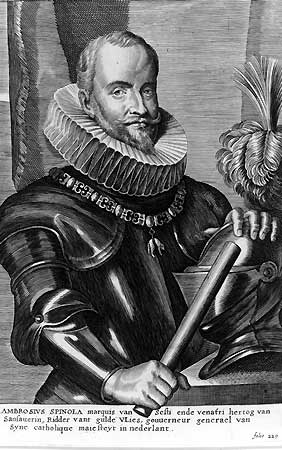
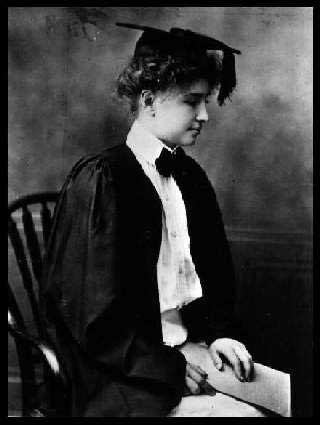
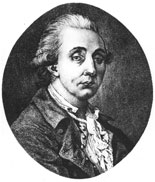
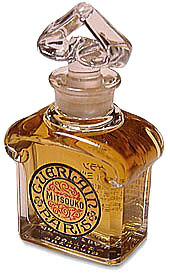
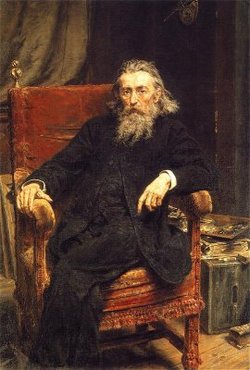
 .
.
